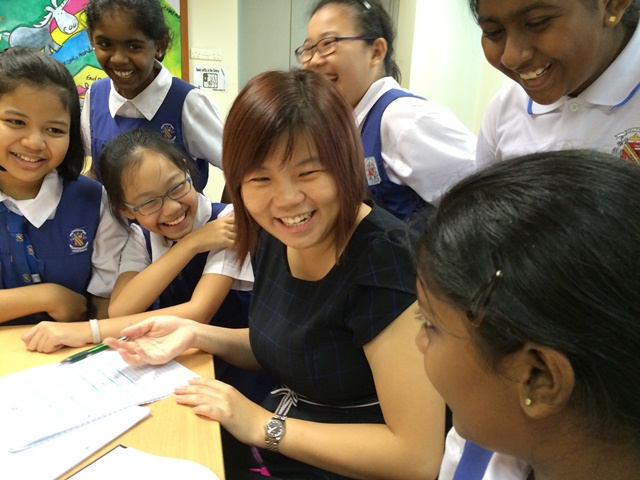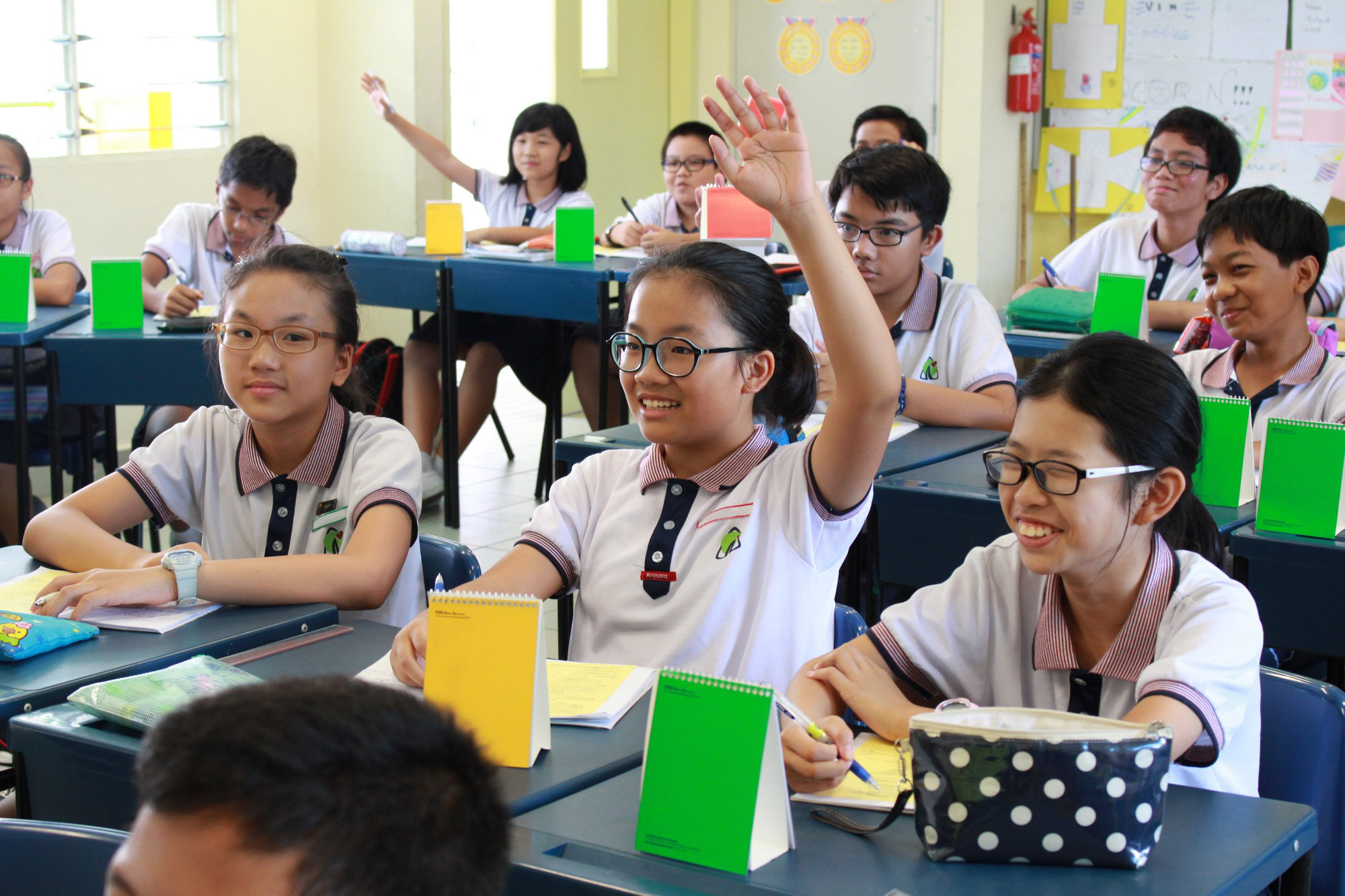Children for Children
31 Aug 2015

What can one child teach another? More than you might think, says Ms Lim Yi Jun, who since 2009 has worked with fellow teachers and partner organisations to bring more than 7,000 children together for a day of fun and learning.’
Lim Yi Jun, Outstanding Youth in Education Award 2015 Finalist,
Seng Kang Primary School
I believe that in order to develop the values and skills my students need in the future, I need to teach beyond the textbook and expose my students to social contexts where they learn through interactions with others. I constantly seek out platforms and take on challenges to give students at CHIJ (Kellock) more chances to learn by doing. I believe that for my students to learn, I need to give them something to do that demands thinking so learning comes about naturally.
“Children for Children”, which I’ve worked on for the past seven years, is a project that’s close to my heart. I’ve reached out to numerous students at various stages of the programme over the years to hone their leadership qualities and social-emotional competencies. Children for Children is an annual platform for our students to pay it forward by making Children’s Day more meaningful for about 1,200 children from underprivileged backgrounds in Singapore. On the eve of Children’s Day every year, about 300 of our students become art facilitators, game masters and actresses to organise activities and put up performances for the less privileged children at various venues such as the Singapore Zoo, Underwater World and Universal Studios Singapore.
Adapting from the concept of service learning, I spearheaded and implemented Children for Children using the 3 As approach – Awareness, Action and Advocacy. In order to generate awareness on the less privileged children among my students, my team and I created the Primary 4 Values in Action package. Our students discussed what it meant to be “less privileged in society” through real-life examples.
For instance, they were asked to bring their utilities bills to school for discussions. Comparing their utilities bills with case studies of the less privileged, we asked our students trigger questions such as “How much do you think a meal cost today?” and “Can you survive on $2 a day?” to enable them to better understand the differences in the circumstances faced by the less privileged and the students themselves.
Through this activity, the girls were often surprised to learn that not every child received three meals a day, or that there were actually families who didn’t have enough money to pay their utilities bills. They made comments like “A McDonald’s burger costs more than this” and asked “How can one possibly survive like that?”. We tied in math concepts like decimals and money, which students needed to use when adding up their daily expenses.
We knew the activity made an impact on our students when we read their reflections. One student wrote that she was shocked to learn that some people survived on so little each day. The exercise helps develop empathy in students and motivate them to pay it forward in their own way.
We gave them various opportunities to volunteer for the activities leading up to the Children for Children event. The students made Children’s Day cards and wrote heartfelt messages in them and packed goodie bags for the participants. The student facilitators also came up with games such as “Pass the Parcel” and “Keep the Balloon Afloat”, which conveyed messages of kindness and encouraged participants to practise kindness in their daily lives.
These activities gave students the room to grow their strengths and learn from one another. I remember a Primary 4 student who had problems with self-confidence. She was larger than her peers and would often tug on her shirt during Physical Education (PE) lessons and cover her body with her arms when presenting in class. I saw potential in her through our interactions: her writing showed vivid imagination and when she did speak up, she was always thoughtful and eloquent.
I encouraged her to try out for a role in a play that was staged as part of Children for Children. I prepared her for the role and taught her the importance of making eye contact, voice projection and posture so that she could improve on her stage presence. She blossomed from a girl who wasn’t able to hold the attention of a crowd into one who was able to rally the crowd and interact with them.
The increase in her confidence was also evident when she rallied her teammates in a presentation of a song which she composed on the divide between the rich and poor for the Open Little Eye Symposium in 2011. Titled “Different Worlds”, the song touches on two children from two different economic strata and highlights the differences in the lifestyles they lead. The song was also featured in the Humanity Magazine that year.
Today, this student is pursuing film studies at School of the Arts Singapore (SOTA). She still keeps in touch with me through Facebook and would inform me of film-casting opportunities for her juniors at CHIJ (Kellock).
It’s been eight years since Children for Children started and the event has grown from a simple day out at the Singapore Flyer to a fun-filled day packed with many activities. I’ve seen students step out of their comfort zones, work together in teams and solve problems.
The Children for Children journey has been a great learning experience for me, too. I have had to juggle my classroom responsibilities with managing Children for Children. The partnership has been mutually beneficial. The children from the various primary schools we reach out to look forward to this event every year, while our students at CHIJ (Kellock) have the privilege to benefit from the different initiatives which have sprung up from it.
Seeing how the students have benefitted and blossomed through Children for Children, with the support of my colleagues who work closely with me, I hope to continue to provide the students with the opportunities they deserve. I know I can’t build the future for my students. What I can do, and what Children for Children does, is build them for their future.

.jpg)



.jpg)